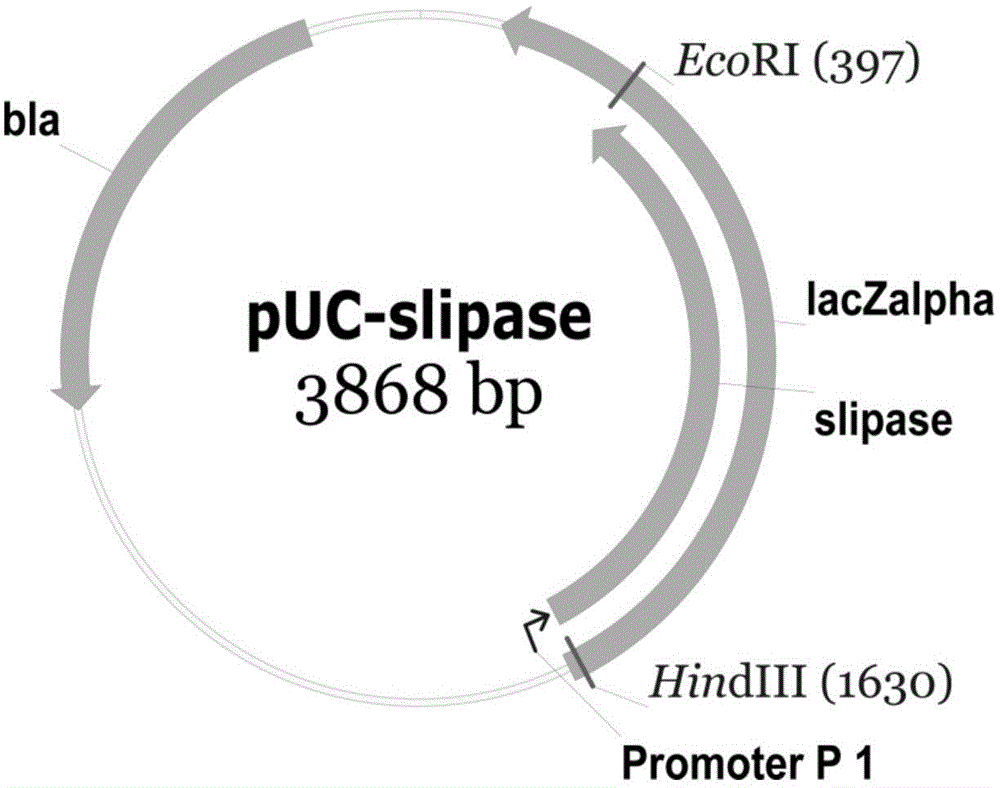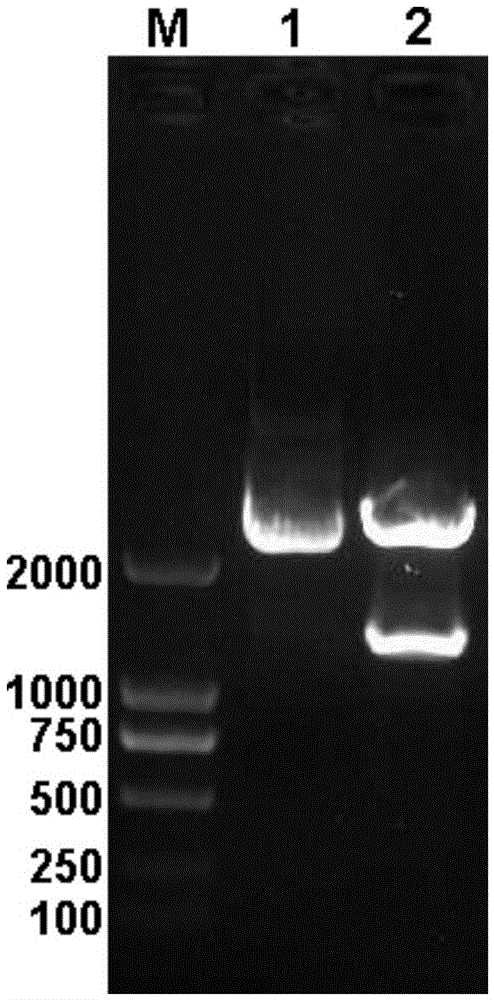A kind of Escherichia coli using triglyceride as carbon source and its application in the synthesis of bio-based chemicals
A technology of Escherichia coli and triglyceride, applied in the field of genetic engineering bacteria, can solve the problems of environmental pollution, impact on food safety, high cost, and achieve the effect of easy gene manipulation and clear genetic background
- Summary
- Abstract
- Description
- Claims
- Application Information
AI Technical Summary
Problems solved by technology
Method used
Image
Examples
Embodiment 1
[0032] Cloning and expression vector construction of Alcaligeneseutrophus H16 secreted lipase gene (slipase, Genbank accession number: AM260479REGION: 965025..966251), the specific process is as follows:
[0033] Oligonucleotide 5'-CCC AAGCTT GATGTCTCGCGCTCCTGGCATG-3' and 5'-CCG GAA TTC CTATGGGCACTCGGATACCGC-3' was used as a primer, and the total DNA of Alcaligenes eutropha H16 (purchased from the German Culture Collection of Microorganisms, DSMNo.:428) was used as a template to amplify the eutrophic The secreted lipase gene (sequence 1) of Alcaligenes, and HindIII and EcoRI restriction sites were introduced at the 5' end and 3' end respectively. The amplification system and conditions are as follows:
[0034] PCR amplification system:
[0035]
[0036] PCR program:
[0037] The PCR amplification product was recovered by agarose gel electrophoresis, and then the PCR product and the pUC19 empty vector (purchased from Invitrogen) were digested with restriction endonu...
Embodiment 2
[0046] The knockout of Escherichia coli BW25113fadR gene, the specific process is as follows:
[0047] The fadR gene (GeneID: 948652) was knocked out using the Red recombination system (Datsenko et al., PNAS, 2000, 97(12): 6640-6645), and the primers (5 '-ATGGTCATTAAGGCGCAAAGCCCGGCGGGTTTCGCGGAAGAGTACATTATgtgtaggctggagctgcttc-3' and 5'-TTATCGCCCCTGAATGGCTAAATCACCCGGCAGATTTTTCTGCATCCGGTatgggaattagccatggtcc-3'), with pKD4 plasmid (preserved by our laboratory, Cao et al., PLoSONE amplified as a template, 2013, 7( Mycin-resistant recombinant fragments. The amplified product was digested with DpnI endonuclease, recovered and concentrated by agarose gel electrophoresis. The concentrated amplified fragment was transformed into Escherichia coli BW25113 competent cells by electroshock transformation method, and the electroshock conditions were as follows:
[0048] Voltage: 2.5kV
[0049] Resistance: 200Ω
[0050] Capacitance: 25μF
[0051] The electroporated cells were coated with a ...
Embodiment 3
[0053] Construction of engineering strain BW25113ΔfadR / pUC-slipase:
[0054] The pUC-slipase plasmid was extracted from the strain BW25113 / pUC-slipase by alkaline lysis, and the recombinant plasmid pUC-slipase was transformed into the competent cells of the strain BW25113ΔfadR in Example 2 to obtain the final engineering strain BW25113ΔfadR / pUC-slipase.
PUM
| Property | Measurement | Unit |
|---|---|---|
| electrical resistance | aaaaa | aaaaa |
| capacitance | aaaaa | aaaaa |
Abstract
Description
Claims
Application Information
 Login to View More
Login to View More - R&D
- Intellectual Property
- Life Sciences
- Materials
- Tech Scout
- Unparalleled Data Quality
- Higher Quality Content
- 60% Fewer Hallucinations
Browse by: Latest US Patents, China's latest patents, Technical Efficacy Thesaurus, Application Domain, Technology Topic, Popular Technical Reports.
© 2025 PatSnap. All rights reserved.Legal|Privacy policy|Modern Slavery Act Transparency Statement|Sitemap|About US| Contact US: help@patsnap.com



